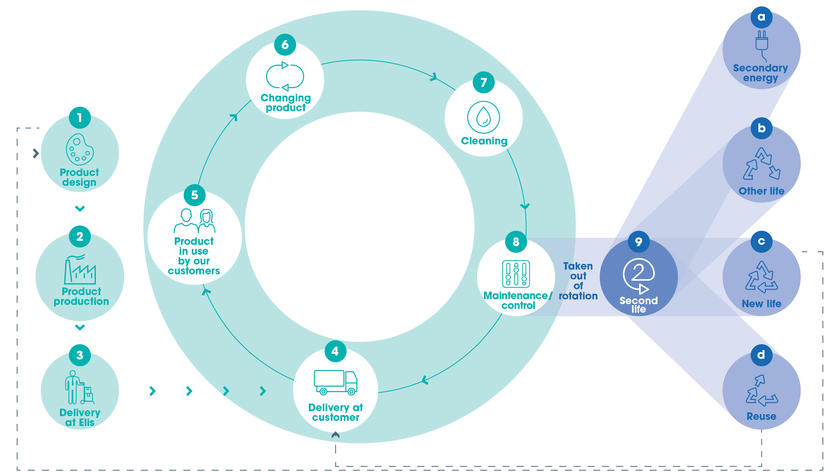News
Net Zero - a continuation of our commitment in the UK
The commitment to achieve net zero emissions by 2045 covers all our emissions, including direct emissions from our operations, indirect emissions linked to the energy used and all other emissions linked to our activities.
This major commitment is the next step on our sustainability journey and will profoundly transform the way we operate from product materials sourcing to our operations and deliveries. Our customers will also benefit from this journey with an even lower carbon footprint service over the years and until we reach our ultimate target.
Focus on UK achievements and initiatives
-
33%
33% CO2 emissions reduction for the past 3 years
-
23%
23% reduction in litres of water used per kilo of laundry delivered in the last three years
What does net zero mean for Elis in the United Kingdom?
Working towards Net Zero for Elis UK will require profound transformation in the way we operate and our relations with our stakeholders, for example by:
-
Continuing to improve energy efficiency in our operations
-
Continually improving our fleet and delivery channels
-
Working on our products longevity and materials
-
Working with our suppliers
-
Further developing reusing and recycling to valorizs our textile at the end of their life
-
Developing new partnerships with our customers, suppliers and eco-system
Circular Economy is at the heart of our business model
Our business model is based on circular economy and emphasizes services over products ownership and rentals over purchases.
Designing waste out and keeping material in circulation, reduce resource consumption and have already allowed us to provide our customers with a lower carbon footprint option. We want to go a step further.

The Elis Group is convinced that the circular economy model, by reducing the consumption of natural resources and extending the life cycle of our products makes a significant contribution to reducing our impact on the environment. •
2025 Elis Group objectives
Elis Group announced in 2019 its new 2025 CSR Commitment program, around 3 main pillars. Commitments include:
-
Reduction of CO2 emissions in the operation by 20% in intensity compared to 2010.
-
Improve thermal energy efficiency in our European factories by 35% compared to 2010.
-
Improve the carbon footprint of our vehicle fleet.
-
To recycle 80% of our textiles.
In the coming months, Elis UK will further specify its full carbon footprint, work on new emission reduction goals and define a clear plan to reach its target.






